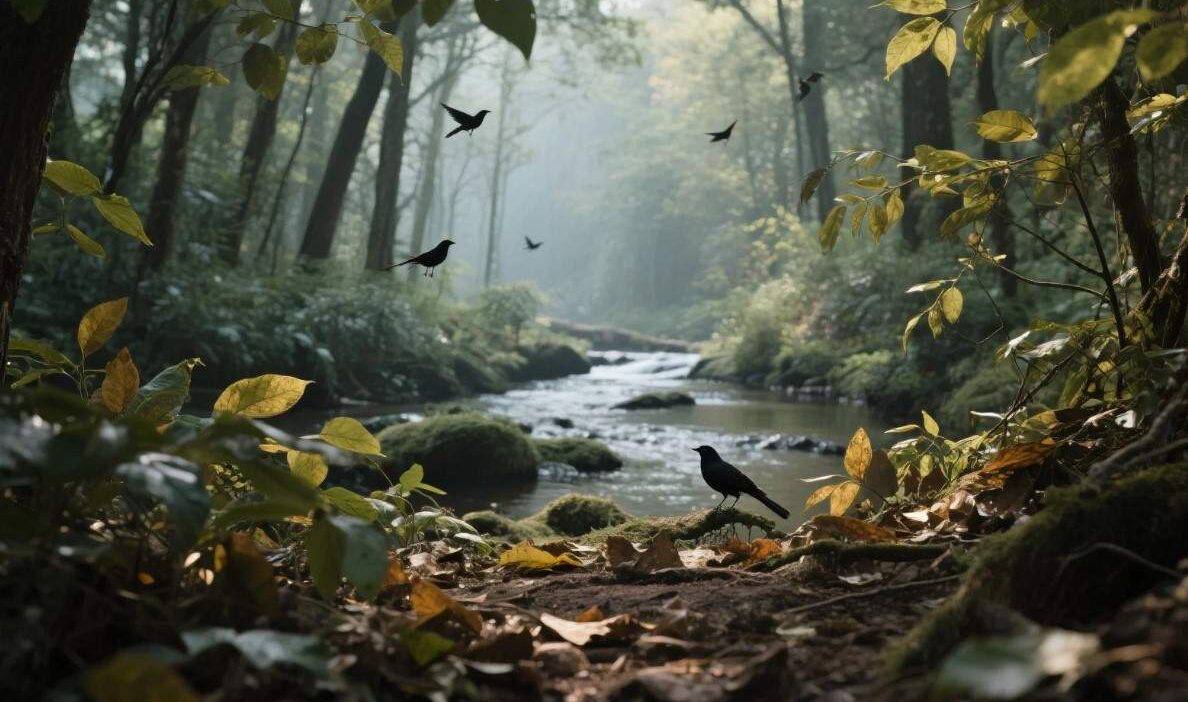The Forest’s Silent Plea: A Call for Intelligent Stewardship
Walk through a lush, ancient forest, and you’ll hear the hum of life: rustling leaves, chirping birds, and the distant gurgle of a stream. But beneath this tranquility lies a quiet crisis. Deforestation, climate change, and invasive species threaten 10 million hectares of forest annually—equivalent to losing 27 soccer fields every minute. Traditional conservation methods, while vital, often struggle to keep pace with these threats.
Enter AI-driven smart forests: a revolutionary fusion of IoT (Internet of Things) sensors, machine learning, and ecological science. These “smart” ecosystems are no longer passive sanctuaries—they’re dynamic, self-regulating systems that monitor, adapt, and protect themselves. By embedding networks of sensors and empowering them with AI, we’re redefining how we safeguard the planet’s lungs. Let’s explore how this technology is turning forests into resilient, future-proof ecosystems.
What Are Smart Forests? The Tech Behind the Trees
A smart forest is a networked ecosystem where every tree, stream, and patch of soil is connected to a digital nervous system. At its core are three components:
1. Sensor Networks: The Forest’s “Senses”
Sensors are the eyes, ears, and skin of a smart forest. They collect real-time data on:
- Environmental Conditions: Soil moisture, pH levels, temperature, and sunlight exposure (via soil and weather sensors).
- Biodiversity: Acoustic sensors detect bird songs, frog calls, and even the vibrations of insect wings, while camera traps and LiDAR map animal movements and vegetation density.
- Human Impact: Motion sensors and satellite imagery track logging, wildfires, or illegal encroachment.
For example, in the Amazon, researchers deploy solar-powered sensors on tree canopies to measure CO₂ levels and detect smoke from early-stage wildfires. In Canada’s boreal forests, underwater sensors monitor stream health, flagging pollution from nearby mines.
2. AI: The Forest’s “Brain”
Raw sensor data is just noise without AI. Machine learning models process this information to uncover patterns humans might miss:
- Predictive Analytics: Algorithms predict wildfire risk by analyzing temperature spikes, dry wind patterns, and fuel moisture levels. In California, AI models now forecast fire danger 72 hours in advance with 90% accuracy.
- Ecosystem Health Diagnostics: AI identifies invasive species (e.g., Asian carp in U.S. rivers) by analyzing acoustic data of fish behavior or image recognition of plant growth.
- Resource Optimization: Machine learning optimizes water distribution in drought-stricken forests, directing irrigation to areas where trees are most stressed.
3. Actuation: The Forest’s “Hands”
AI doesn’t just observe—it acts. Smart forests use actuators to respond to threats:
- Automated irrigation systems adjust water flow based on soil moisture data.
- Drone swarms plant native saplings in eroded areas, guided by AI maps of degraded land.
- Solar-powered barriers deploy to block illegal logging routes detected by motion sensors.
The Benefits: Why Smart Forests Are a Game-Changer
1. Faster, Smarter Conservation
Traditional methods rely on manual surveys, which are slow and limited in scope. Smart forests provide continuous, high-resolution data, enabling rapid responses. In Kenya’s Maasai Mara, AI-powered sensors detected a surge in poaching activity, prompting rangers to deploy drones and intercept 12 poachers in a single week—saving 8 elephants.
2. Climate Resilience
Forests are critical carbon sinks, but climate change weakens their ability to store CO₂. Smart forests enhance this role: AI models identify which tree species thrive in warming climates, guiding reforestation efforts. In Scotland, a smart forest planted with drought-resistant oak hybrids now sequesters 30% more carbon than traditional plots.
3. Biodiversity Boost
By monitoring microhabitats, smart forests protect endangered species. In Australia’s Great Barrier Reef, sensors track coral bleaching in real-time, allowing scientists to deploy cooling “bubbles” (underwater air curtains) to reduce heat stress. Similarly, acoustic sensors in the Congo Basin have uncovered hidden populations of critically endangered bonobos, guiding conservation efforts.
4. Community Empowerment
Smart forests engage local communities as stewards. In India’s Western Ghats, tribal groups use smartphone apps to report illegal logging, with AI verifying data and alerting authorities. This not only protects forests but also creates jobs and fosters ownership.
Challenges: Navigating the Tech-Ecology Divide
While promising, smart forests face hurdles:
1. Cost and Accessibility
Deploying sensors and AI infrastructure is expensive. A single sensor node can cost 1,000, and maintaining networks in remote areas requires ongoing funding. For developing nations, this is a barrier. Solutions include modular, low-cost sensors (e.g., using recycled materials) and public-private partnerships.
2. Data Privacy and Ownership
Who owns the data from a smart forest? Indigenous communities, governments, or corporations? There’s a risk of “data colonization,” where outside entities profit from local ecosystems. Clear regulations—like the EU’s AI Act—must ensure data is shared equitably.
3. Technical Reliability
Sensors degrade in harsh environments (rain, fire, pests), and AI models can fail if trained on incomplete data. For example, an AI trained on temperate forests might misclassify tropical species. Robust testing and adaptive algorithms are critical.
4. Ethical Dilemmas
Can AI “decide” the fate of a forest? Critics argue that removing human judgment risks overriding ecological nuance. For instance, an AI might prioritize fire suppression over preserving a rare beetle habitat. The solution: AI as a tool, not a replacement—empowering scientists to make informed, empathetic choices.
The Future: Forests That Learn and Grow
The next frontier for smart forests is integration with cutting-edge tech:
- 5G and Edge Computing: Faster data transmission enables real-time decision-making. Edge devices process data locally, reducing latency—critical for wildfire response.
- Blockchain for Transparency: Securely tracking carbon credits or timber sales via blockchain ensures accountability.
- Synthetic Biology: Engineering trees to resist pests or drought (e.g., CRISPR-edited poplars) could be deployed in smart forests to enhance resilience.
A New Era of Forest Stewardship
Smart forests are more than a technological novelty—they’re a testament to humanity’s ability to learn from nature and collaborate with it. By merging sensors, AI, and ecological wisdom, we’re not just protecting forests—we’re creating partners in sustainability.
The question now is not if we can build smart forests, but how we can do so equitably, ethically, and at scale. As biologist E.O. Wilson once said, “The one process ongoing that will take millions of years to correct is the loss of genetic and species diversity by the destruction of natural habitats.” With smart forests, we have a chance to slow that loss—and maybe even reverse it.
Join the conversation at AIDNESS. Should smart forests be prioritized over traditional conservation methods? Can AI and sensors coexist with human expertise? Share your thoughts—we’re all part of this journey to reimagine our relationship with the natural world.



